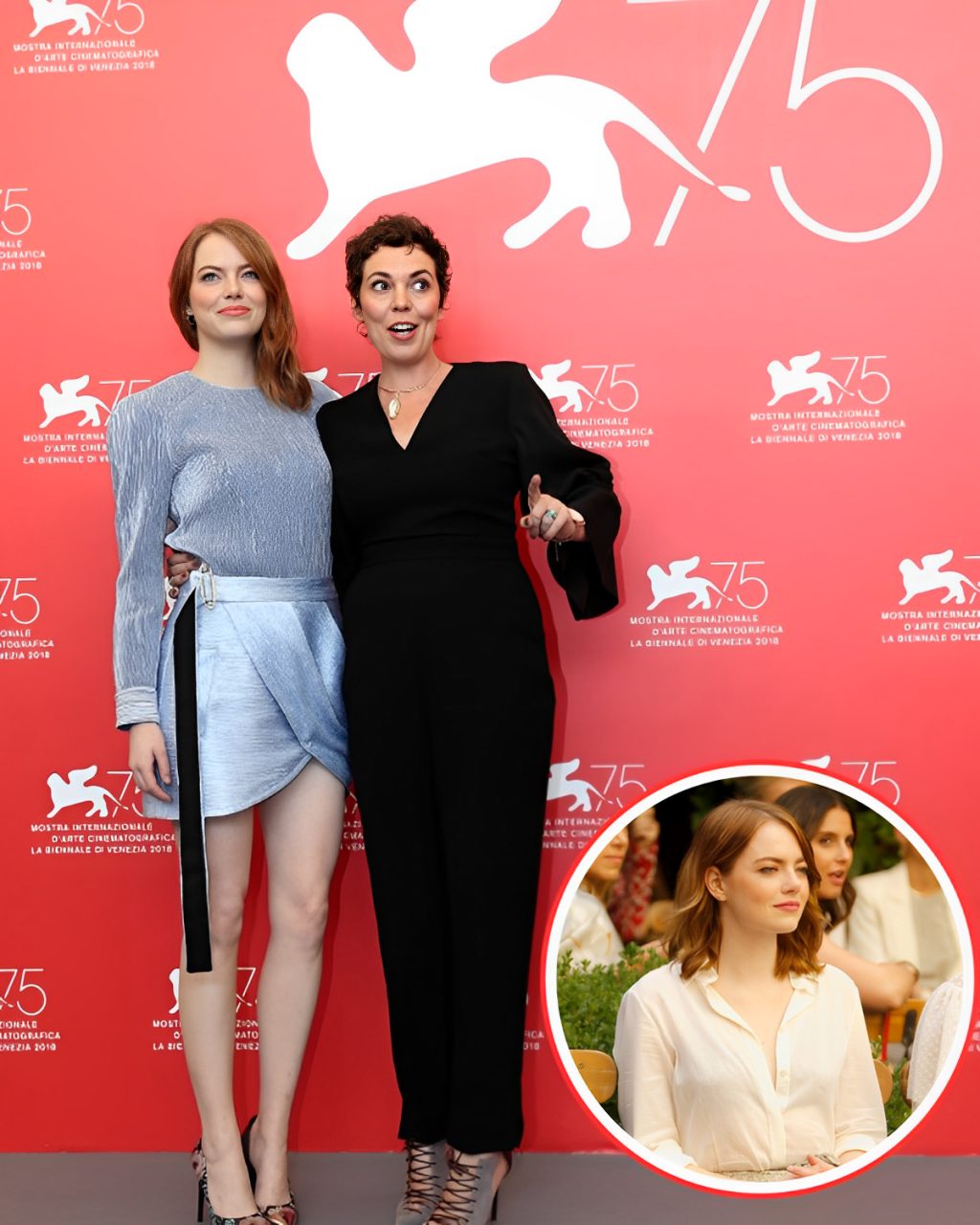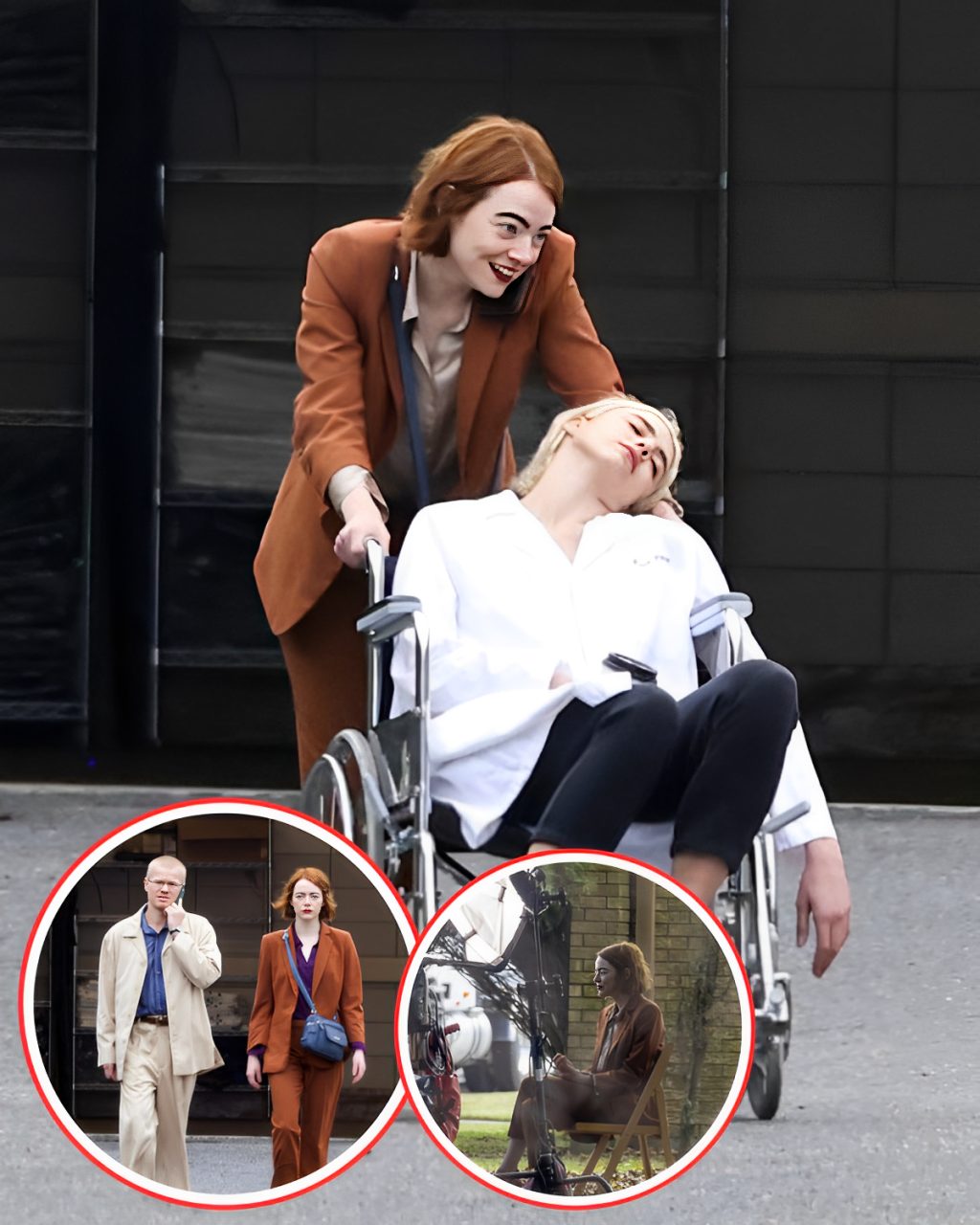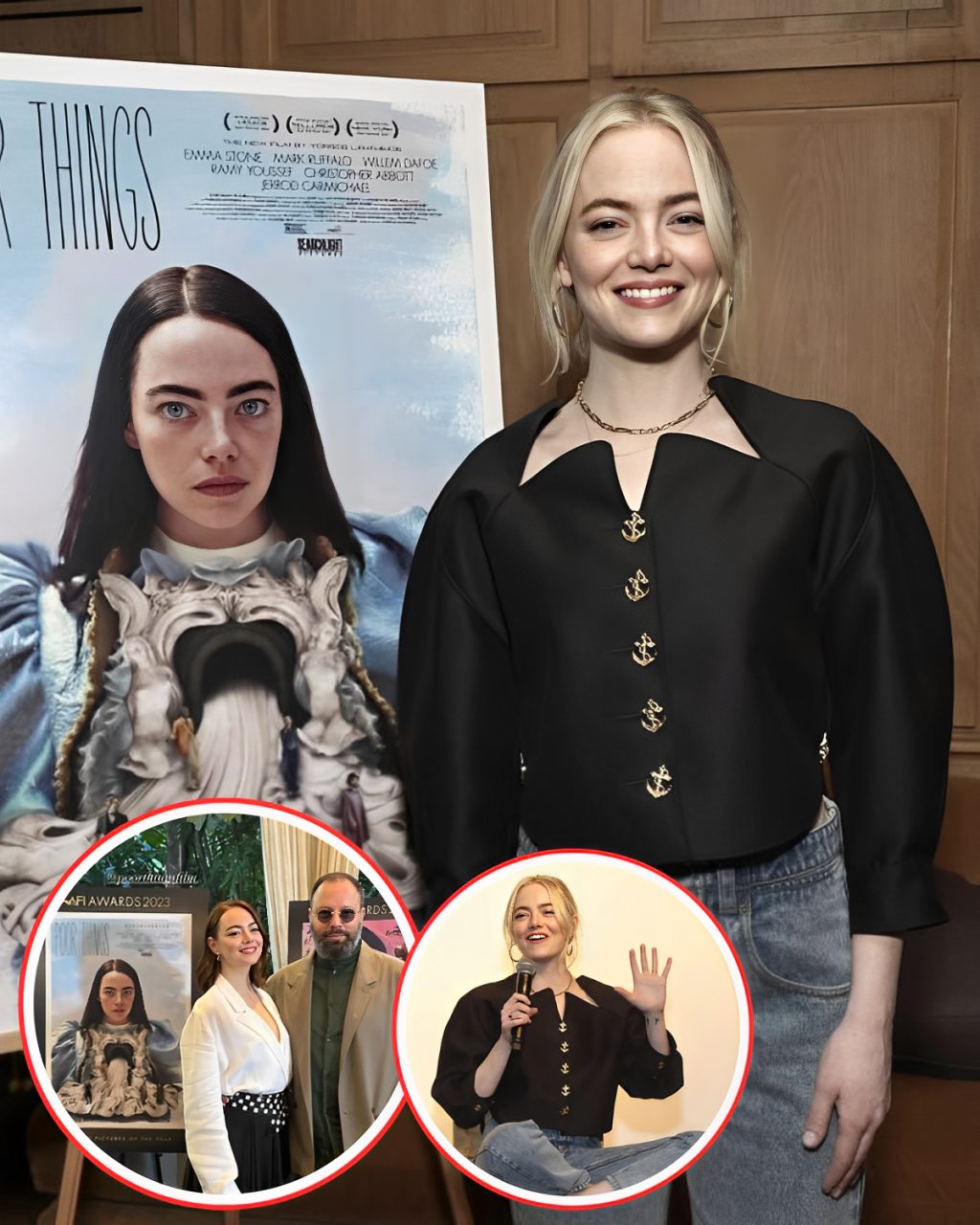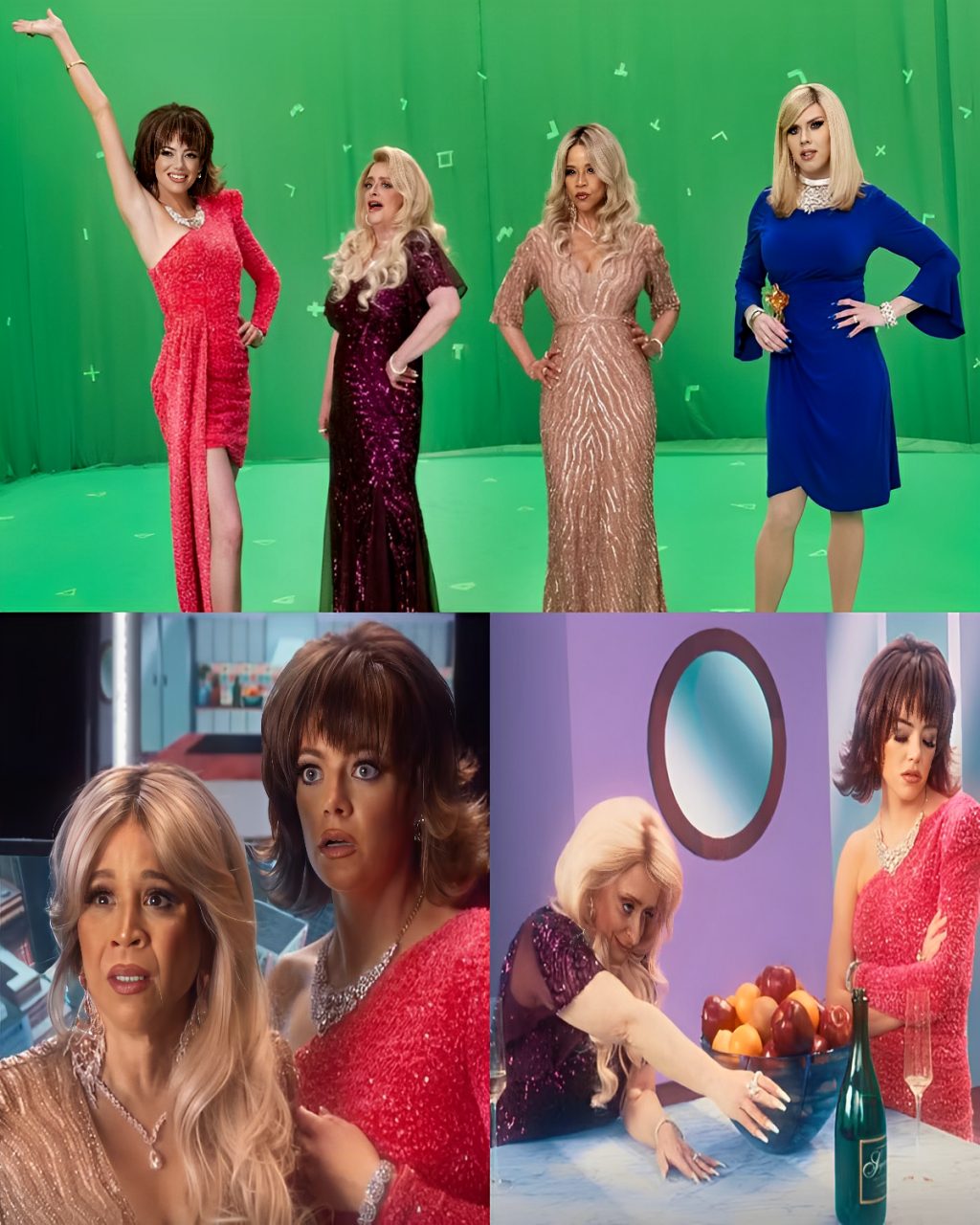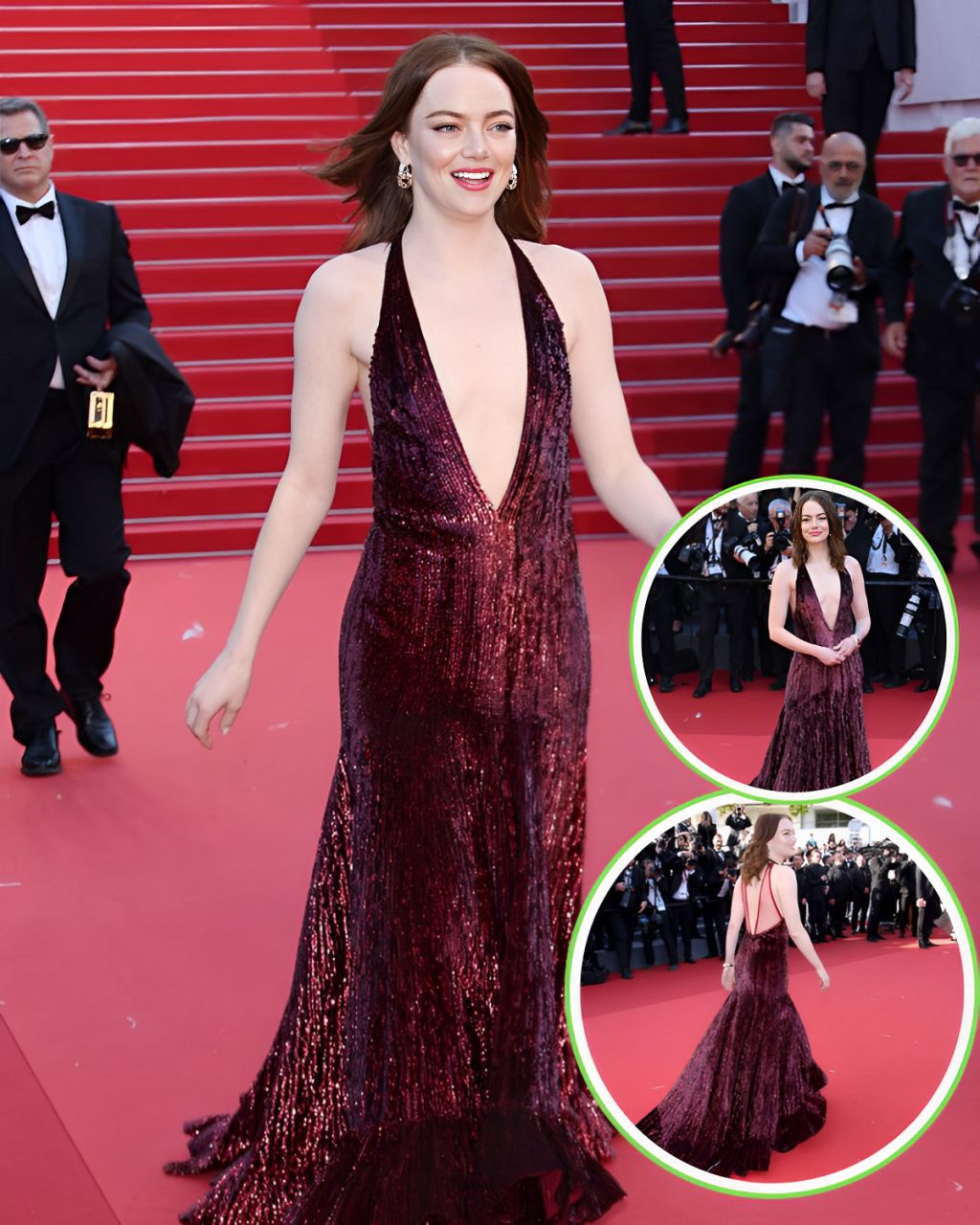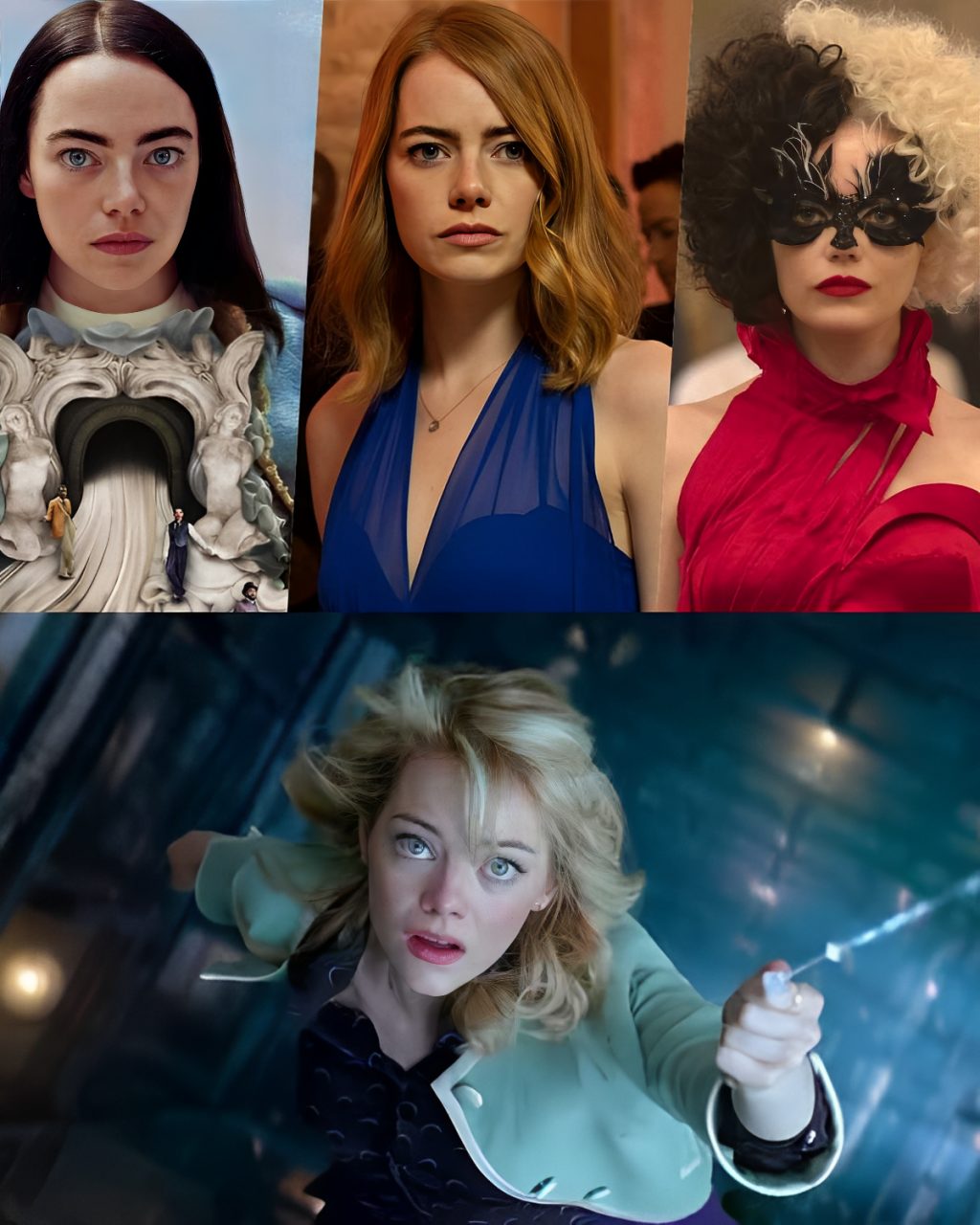Watching Yorgos Lanthimos‘s “Kinds of Kindness,” it’s immediately clear that Emma Stone’s costumes in the film are a complete 180 from the fantastical wardrobe she wore as Bella Baxter in last year’s Lanthimos release, “Poor Things.” Instead of larger-than-life balloon sleeves and floor-length tulle, there are crotch-skimming minidresses, suits hilariously paired with hiking sandals and one very special orange Speedo. But don’t underestimate the power that lies within these less-whimsical garments: They convey much more about the film and its complex characters than one would suspect.
Costume designer Jennifer Johnson (“Blonde,” “I, Tonya”), who last worked with Lanthimos on the short film “Nimic,” had the unique challenge of designing triple the amount of costumes for an actor in a typical film. “Kinds of Kindness” is described as a “triptych fable,” with Stone, Jesse Plemons, Willem Dafoe, Margaret Qualley, Mamoudou Athie, Joe Alwyn and Hong Chau playing different characters in three separate stories, all set in an indistinguishable city (filmed in New Orleans). The first is about a man named Robert (Plemons) whose life unravels after he refuses an audacious request from his wealthy and powerful boss, Raymond (Dafoe). Next, Plemons plays a policeman whose wife (Stone) returns from being lost at sea to a seemingly different person. The third story sees Stone and Plemons as cult members tasked with finding a woman who can supposedly bring people back from the dead.
Compared to the vibrantly bizarre ensemble of “Poor Things,” these characters seem a tad more like ordinary people. But, in some ways, they might be even more eccentric — and Johnson’s costumes brilliantly depict that.
“My dad was in the FBI, so I’ve been trained to be an extremely observant person,” Johnson tells Fashionista. “I’m really obsessed with just looking at people and clocking every detail of every person that ever walks down the street. I’ll actually remember somebody by the shoes they wear even more than their face.”
Her investigative tendencies also impact her design process. Johnson tries not to be influenced by other films; instead, she’ll find muses in real-life people. “I like to look at a lot of reportage documentary types of photography: art books, photo books. Yorgos likes to use a lot of photography as examples as well,” she says.
Photo: Courtesy of Searchlight Pictures
One source of inspiration was the expressionist painter Alice Neel; another was Gianni Agnelli, the Italian Fiat magnate known for his impeccable style. In the opening story, “The Death of R.M.F.,” Raymond controls every aspect of Robert’s life, from his wardrobe, to what he can eat to when he can have 𝓈ℯ𝓍 with his wife. Agnelli was the perfect sartorial inspiration for a character with such power.
“We needed a lot of designer clothing, which was not easily available in New Orleans, so we did a lot of ordering from Mr. Porter and from Italian designers,” explains Johnson. For Raymond, she mixed luxury brands with vintage ties, because she felt that the “’70s fat knot” look helped “elevate his character into feeling like someone unusual, eccentric and well-traveled.”
Photo: Courtesy of Searchlight Pictures
The characters under Raymond’s control also receive the designer treatment. Robert’s outfits consist of colorful Tom Ford turtlenecks and Armani and Loro Piana suits; Raymond’s mistress Vivian (Qualley) always answers the door in a La Perla silk robe. Meanwhile, the outfits for Rita — another subordinate played by Stone — are “extremely inappropriate” for her job at an eyeglass shop.
“Her dress barely grazes her crotch,” says Johnson, who sourced Rita’s pieces from Bebe and local shops, including a store in a New Orleans mall that specializes in Mardi Gras masks. “They had this whole series of little handbags in jewel tones, so she has a different handbag for each dress. I wish that she got more screen time because her costumes were really, really fun and sassy.”
Photo: Courtesy of Searchlight Pictures
In the second story, “R.M.F. is Flying,” Plemmons plays a cop who spirals after his marine biologist-wife Liz (Stone) gets lost at sea. She reappears, but acts very differently — and he’s convinced she’s an imposter. “It’s not clear to the audience, but something’s off,” says Johnson.
One clue to this (or what Johnson says could be viewed as an “Easter egg”) is that Liz’s shoes are suddenly too small for her when she returns. Johnson says that since Stone plays three different characters, the look for each role had to be very distinct. Liz needed to “feel very working-class,” or like somebody who’s not exactly interested in fashion: “She’s more functional and practical, so she wears technical zip-off pants, and she loves a good Margaritaville, Tommy Bahama, kind of comfortable shirt that doesn’t fit that well.”
Johnson also points out that Liz is a swinger, which was challenging at first. “There are no beautiful images of swingers [to reference]; it was all these bad reality shows that I was taking screen grabs from,” she says. “Then I realized that those people read as sort of like, ‘This is a swinger,’ and I didn’t want to do that. So then I just started thinking about all the normal people in the world that do really subversive things. You have no idea that they’re up to crazy shit in the bedroom.”
Finally, in “R.M.F. Eats a Sandwich,” Dafoe and Chau are leaders of a water-worshipping cult who enlist Emily and Andrew (Stone and Plemons) to find a woman gifted with the power of resurrection. Johnson researched a lot of cults, where members tend to dress identically. (Think: Heaven’s Gate in their black pants and Nike Decades, the Source Family in floor-length robes and floaty gowns.) She says they wanted to get away from typical cult clothing tropes and lean into the group’s obsession with water.
“It’s a 𝓈ℯ𝓍 cult that drinks people’s tears,” she laughs. “[The costumes] were sort of this idea of comfort and feeling close to nature, but with an odd color palette that’s a little distasteful. And all of the clothes are easy to remove so they’re ready any time to swim or have 𝓈ℯ𝓍.”
Photo: Courtesy of Searchlight Pictures
In one scene, Dafoe wears an orange Speedo that Johnson says he had chosen himself during a fitting.
“Having been somebody who has really loved water my whole life, you always want to either be nɑƙeɗ or have the least clothing as possible to drag you down when you’re swimming, so I thought, what could be something that’s kind of 𝓈ℯ𝓍y and really outrageous?” says Johnson. “Willem saw and he tried it on immediately, and then we surprised Yorgos… It just felt like that sense of confidence that Willem has as an actor and that sense of confidence that only the character has was distilled in an orange bikini.”
As for Emily and Andrew, they’re always speeding off in her purple Dodge Challenger in matching suits, making them somewhat reminiscent of a Scully and Mulder (albeit a cultist version). Look more closely, and you’ll notice something is also off with them: They’re wearing water sandals. Not quite the business attire one would expect when entrusted with such a crucial mission.
Photo: Courtesy of Searchlight Pictures
“I think they’re so entrenched in the cult that they still can’t get totally on board with being a business person or a member of actual society, so they still have their water sandals on,” says Johnson. “It’s this idea that they think they look normal, and going out and buying a very, very cheap suit that they think is a very mainstream look. But it actually makes them even weirder. They would have been much more normal-looking, just keeping their outdoor gear on.”
“Kinds of Kindness” is a dark comedy. And whether it’s cheap suits and water sandals, a Mardi Gras-inspired handbag or the fact that some of the characters wear the same outfit the whole time (like a cartoon character), the costumes effectively convey this humor and all of its intricacies.
“There’s an element of absurdity and humor running through the whole thing,” says Johnson. “Why people do what they do and the struggles of power — those kind of master-servant, weird plays of humanity and how that telegraphs in clothing. And the choices that people make are sometimes not the best choice.”





